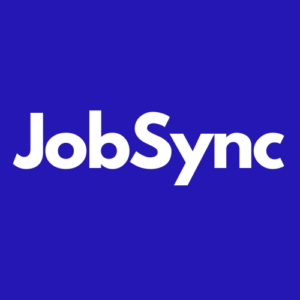
How to Win at Organic-first Hiring
Learn the simple things you can do to get more free applicants.
There are two types of candidate traffic you can get for your jobs: free and paid.
Paid is the candidate traffic you get from your sponsored jobs—the paid listings that get bumped to the top of a job seeker’s search results. Because they’re the first jobs people see, they receive up to five times more clicks than free listings.
When we refer to organic traffic, it means the clicks and applications that come to your recruitment website from postings on job boards and search engines that you haven’t explicitly paid for. Sites like Indeed and Google for Jobs aggregate job listings from millions of sources across the internet, including career sites, recruiter listings, job boards, and other sources. These non-sponsored jobs will appear in a related search query and can be viewed by thousands of candidates without you paying a cent.
The downside is they’re listed below the sponsored jobs so they’re much less visible. Non-sponsored jobs are also sorted by date, so the more jobs that show in a particular search, the faster a posting will fall off the first page.
On the upside, if you are being given free traffic, it’s often because there aren’t enough paid-for matches, so the likelihood of the match being very, very good is high.
And … it’s still free candidates! So you want to set yourself up to capture as much of that organic traffic as possible.
Why make an organic-first hiring play?
For a while now, employers have focused mainly on paid traffic, assuming that if you pay for something, you get better results. That’s a fair assumption. When you’re competing with lots of employers for the same limited pool of talent, it makes sense to pay to have your opportunity stand out.
Organic traffic, on the other hand, is seen as more of a bonus than a core part of a recruiting strategy. The mantra with organic isn’t far from your grandma’s old saying, “You get what you get and you don’t get upset!” Since the traffic’s free, you can’t complain about it.
In reality, organic traffic should never be an afterthought. Play the game well, and it can lead to a higher number of applicants who are more likely to fit the job description than paid traffic. So you definitely need to include it in your game plan.
Why? Well, it’s mostly a numbers game.
Yes, there currently are more open jobs in the US than there are people available to fill them, which is the basic business case for sponsored listings. But remember, candidates do not apply for one job ever. They apply to hundreds of jobs because the market has told them they need to lay down lots of bets to win any offers.
Indeed, for instance, tells candidates to “pace themselves” and apply for “only” 15 jobs a week. Do that for six weeks, and you’ve applied to 90 jobs. Times that by the number of job seekers in the market and…well, we won’t do the math, but you can see how there are far more candidates willing to give you their information than jobs available to grab that information. Simply—there are more opportunities to capture organic traffic than you might think.
There’s another reason to make an organic-first hiring play: money. When recruiters are working with fixed budgets, it makes sense to focus the dollars on jobs that are hard to find candidates for, using sponsored listings to give them greater visibility. The other jobs are still available for hiring and they still need candidates. Free traffic is a great way to fill those roles.
How do you tap into organic traffic?
At its most basic, organic traffic comes down to search engine optimization—the science of matching your job to the exact search queries job seekers are making.
For example, when a job seeker types in “project manager,” they’ll get back millions of search results because it’s a very general search. But as you start adding details like salary and location, the results become more refined, offering fewer but more accurate search results.
Your goal is to achieve a very tight match between your job and the job seeker’s search query. This will push your job higher up the page results where it usually will get more clicks.
In other words, the only thing limiting your organic performance is the quality of your job post.
However, there’s a catch: companies that provide organic traffic, such as Indeed, Zip Recruiter, Jobcase, LinkedIn, and Google for Jobs, all have different search algorithms and rules for what they want to see in your job advertisements to qualify for their organic traffic.
You can either comply with the rules and reap the benefits, or ignore the rules and get nothing.
As long as the burden is not too high to comply, it’s to your benefit to keep up with what the traffic providers want.
What are the rules?
Obviously, you’ll need to learn the rules of each organic channel you use. Generally, though, we can break them down into two buckets:
1: Google for Jobs
Google is focused on the structure of your jobs and your website. It favors content with a high trust, credibility, and usability factor, so you may have to do some work around making your careers site mobile-friendly, for example.
More importantly, Google is most concerned with giving candidates information they really care about when they’re comparing job listings. Including a physical street address in your job ad (as opposed to just the city or state) will show up higher in Google’s search results for this reason. Google has done a ton of research and believes that candidates really want to know where the job is so they can calculate the length of their commute before they decide whether or not to apply. If your job listing makes it easy for candidates to make these decisions, then Google will reward you with higher page visibility.
The same goes for salary. Google for Jobs does not care about your thoughts on pay transparency or whether it’s legislated for in your state. The research shows that candidates like having salary information, so jobs with salary information will rank higher in search results than those without, even when the salary is below the market rate.
But the most important quality for high ranking on Google for Jobs is the ability to allow a candidate to apply directly to the job, with no multiple clicks, logins, or registrations as part of the process.
2. Job boards
With most job boards, the job’s title and the location are the two strongest parts of the match algorithm. Get those to be as close as possible to what the candidate has put in the search bar, and you should see some good results. We recommend you start by:
-
Using natural language titles that are normal for the industry. For example, “chef” is a thousand times better than “food artist” because nobody searches for “food artist.”
-
Removing abbreviations. “Senior Financial Analyst” will be more discoverable than “Sr. Financial Analyst” as the latter may not be considered a match with a search for “Senior.”
-
Cutting the fluff. On average, candidates type two or three words into the search box. If your job has a four-word title, and the candidate puts two words in the search bar, you’ve already dropped your job to only a 50% title match.
-
Use language that candidates are naturally using. If the job’s in Boston, say “Boston.” Don’t write: “Our office is located near Fenway Park.” They’ll never search for this language and your job will not show up as a result.
Bear in mind that your sponsored jobs, the ones with money on them, will always rank higher than organic ones in page results, even if they’re the exact same match to the candidate’s search. Money is a big feature in the match algorithm, and these platforms are businesses after all.
But here’s the funny thing about sponsorship—to a large degree, you’re sponsoring bad titles that nobody is searching for. If you have a bad title, you’ll have to spend more money to hit the algorithm’s match percentage so the job is high enough on the page for a candidate to see it.
What you also tend to find in this scenario is that it’s the organic listing—not the sponsored listing—that is more likely to convert. Candidates who are searching for something specific (“Project Manager, New York City”) are usually highly motivated to apply if they find something that meets their specific criteria. This means that bringing in organic traffic may save you money by reducing the number of jobs you need to sponsor or free up sponsorship dollars for your truly difficult-to-fill positions. It may also attract better-suited candidates for your open positions.
It’s all about the hire
At this point, you may be wondering why would job boards give all this valuable, high-converting traffic away for free? Short answer: job boards are measured on how many hires they deliver for employers compared to other job boards and candidate sources. The more hires they bring in, the better their reputation and revenue.
Since organic traffic is so specifically matched to the candidate’s search, it is often more likely to lead to successful hires compared to paid traffic—so job boards want to give it to you.
Now, few job boards can provide you a breakdown of organic vs. sponsored rates because the candidate is transferred to your career site and few can distinguish between paid and free, but it’s worth questioning your job board account manager on this if you have a high-volume hiring need. You can also measure the success of your organic vs paid traffic through an integration that allows you to see where your candidate traffic is coming from and track those sources through the recruiting process to the hire.
Once you have your baseline, take a look at the job board’s matching rules and pick off the easy wins. If your job titles are terrible, fix them and see how many more organic candidates you get next month. Add a location and measure again. Add a salary range and measure again.
Throughout this optimization process, remember that free vs paid is not an either/or decision. It’s about understanding your options and budgeting your resources wisely to get the best results. So don’t be afraid to experiment with both organic and sponsored job listings. With the right strategy and continuous refinement, you can attract top talent while also keeping your recruitment budget in check.


